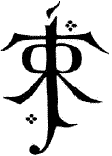Examples of Memes
Many authors (e.g. Dawkins, Dennett and others) have summed up several examples of memes. Both Dennett & Dawkins give the example of Beethoven’s symphonies. In this specific case it is often enough to take only a couple of bars, for example the first few bars of Beethoven’s fifth symphony (Dennett 344).

This example shows the importance of perception. At the end of the previous paragraph you may have imagined the first measures of this symphony. It can be assumed that you would not have done so if the only reference given was the figure of the first six bars. If a host already has the knowledge of modern western musical notation, he or she will find it easy to recognize the tune. A host who lacks this knowledge, or memeplex that allows the decryption and encryption of music, will not be able to decode the code and will therefore be insusceptible and will not be able to assimilate the meme in this form. This example also shows that if one would hear the first few notes, this may be enough to trigger the rest of the symphony or at least the rest of the first movement.
Other examples of memes are what Dennett calls ‘distinct memorable units’, with examples such as the alphabet, chess, impressionism, building arches etc. (Darwin’s Dangerous Idea 344). The notion of being ‘memorable’ limits memes in this definition. A random sequence of letters is not very memorable. When this random sequence of letters takes the shape of a self contained token with a distinct meaning to it, it becomes memorable and can then be considered a meme. So ‘dll’ may not mean anything to some people and may not be something that will be passed on, but to an experienced computer user and programmer, it will stand for ‘dynamic link library’ and will have a specific meaning. This shows that the frame of reference of the host is very important when considering meme examples.
The distinct meaning of the particular meme does not necessarily have to be decodable by conventional means. Symbols and logos often carry no direct link with their meaning. Nike’s wavelike symbol says nothing about the company ‘Nike’ but is nevertheless so popular that the company has started using it even without the brand name.
Sometimes memes only proliferate within a small community. They become tokens of mutual understanding and represent a shared background or interest. Band logos, street gang tags and territory markers, religious symbols and the hacker alphabet all belong to a certain category of hosts. Another example is the number 42; to most people this is the number between 41 and 43 but to adepts of Douglas Adams’ Hitchhikers Guide to the Galaxy, it is the answer to the question of life, the universe and everything.
An example of a graphical meme is the symbolic representation of the initials of J.R.R. Tolkien, author of the Lord of the Rings Trilogy and creator of the world of Middle Earth. These initials are an artistic rendition of the letters and represent not only the name of the author but specifically the name of the author linked to the novels which he wrote and not to his scholarly work.
